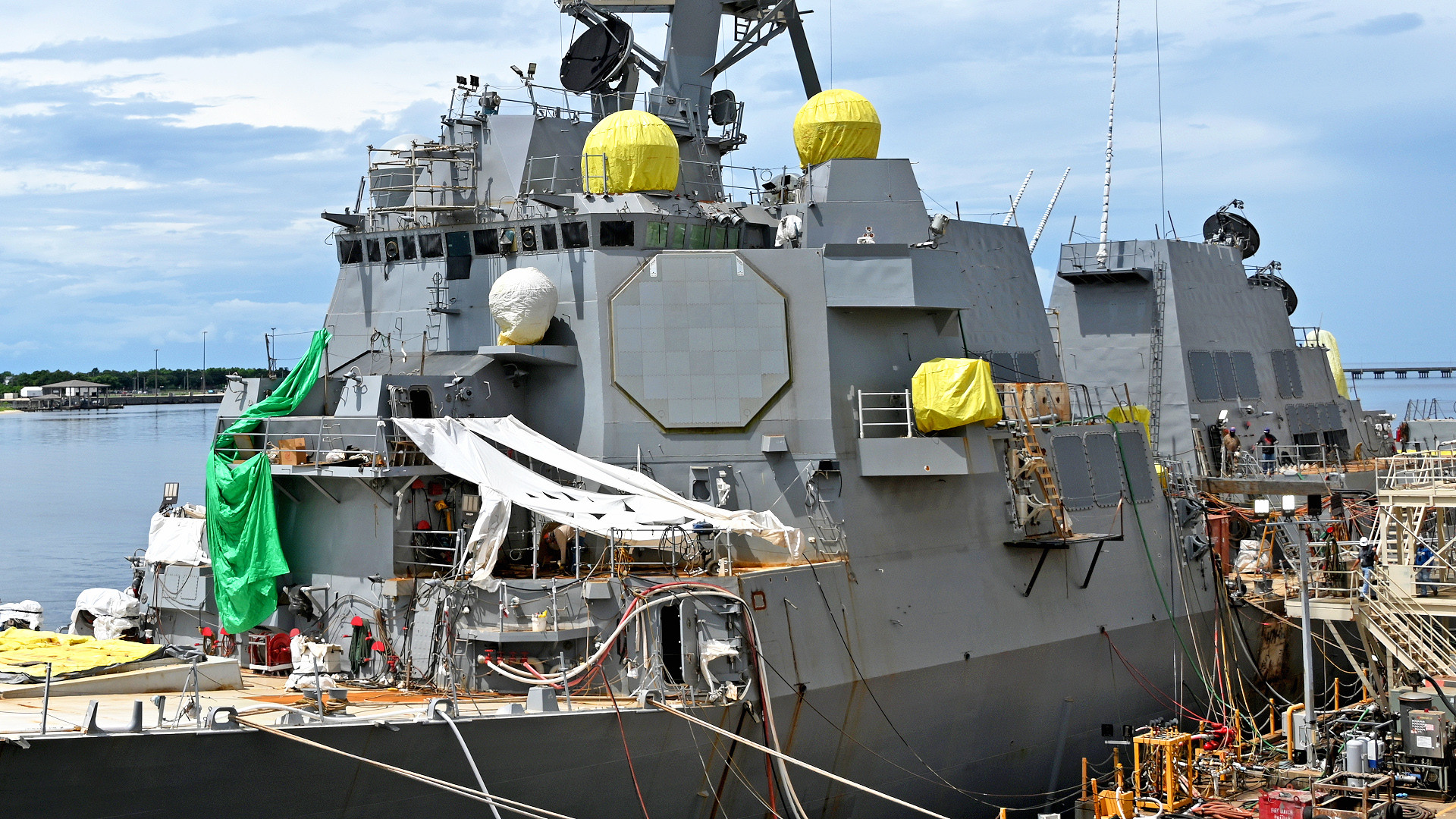The U.S. Navy’s future Arleigh Burke class destroyer, the USS Jack H. Lucas, the first example of the Flight III subclass, now has the fixed-face arrays for its powerful AN/SPY-6(V)1 radar installed on its main superstructure. Also known as the Air and Missile Defense Radar, or AMDR, this is the Flight III design’s signature sensor and offers a major boost in capability over the AN/SPY-1D radars on earlier Arleigh Burkes.
Jack H. Lucas, which was laid down in 2019, is currently in the process of being fitted out at a yard belonging to the Ingalls Shipbuilding division of Huntington Ingalls Industries (HII) in Pascagoula, Mississippi. Longtime naval journalist Chris Cavas was able to tour the ship and take photographs of it on August 4. Cavas was kind enough to share some of the pictures he took with us.
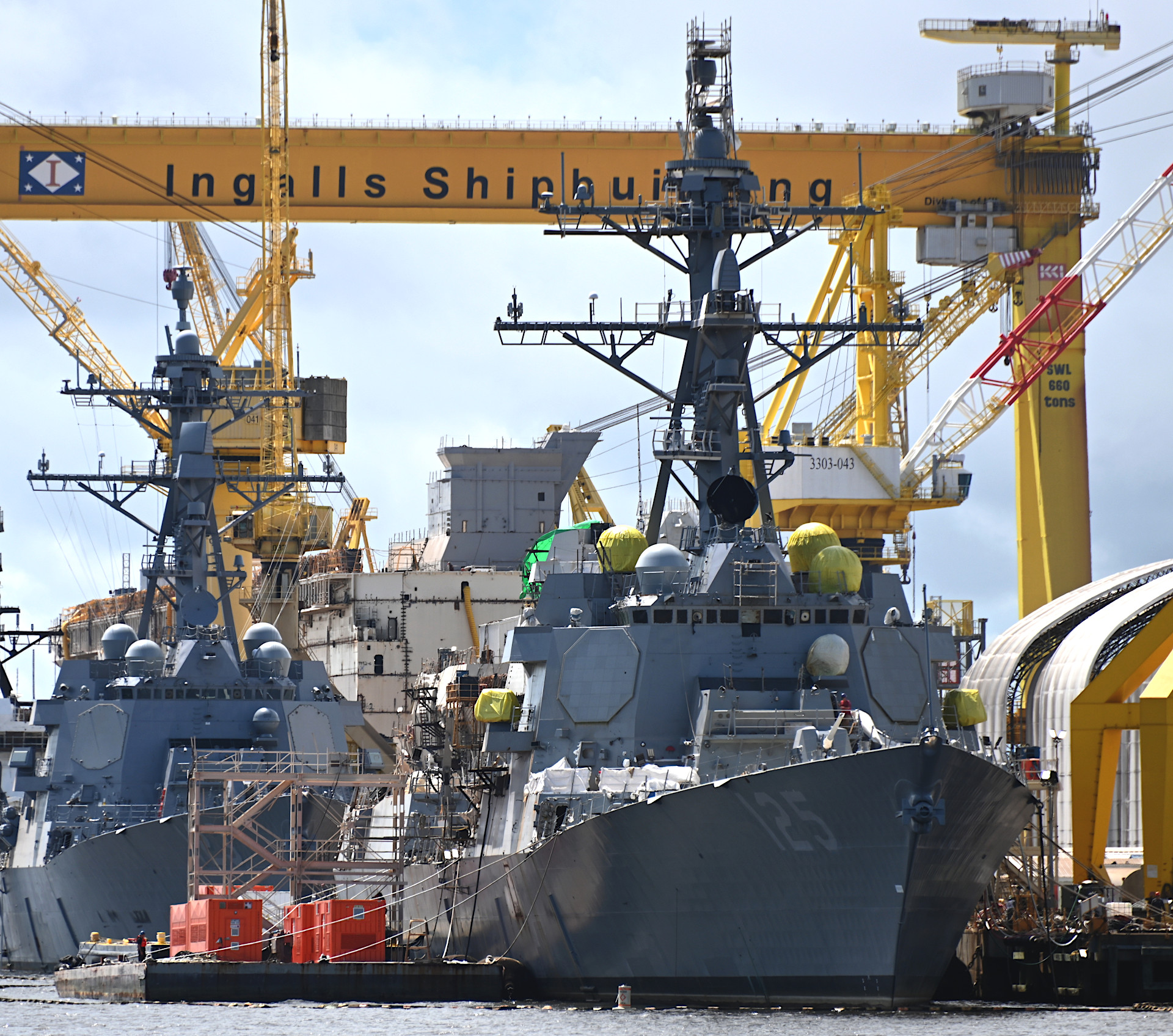
The destroyer is named after Jacklyn “Jack” Lucas, who was the youngest recipient of the Medal of Honor during World War II, and whose extremely colorful career with the U.S. Marines and later the U.S. Army you can read more about here.
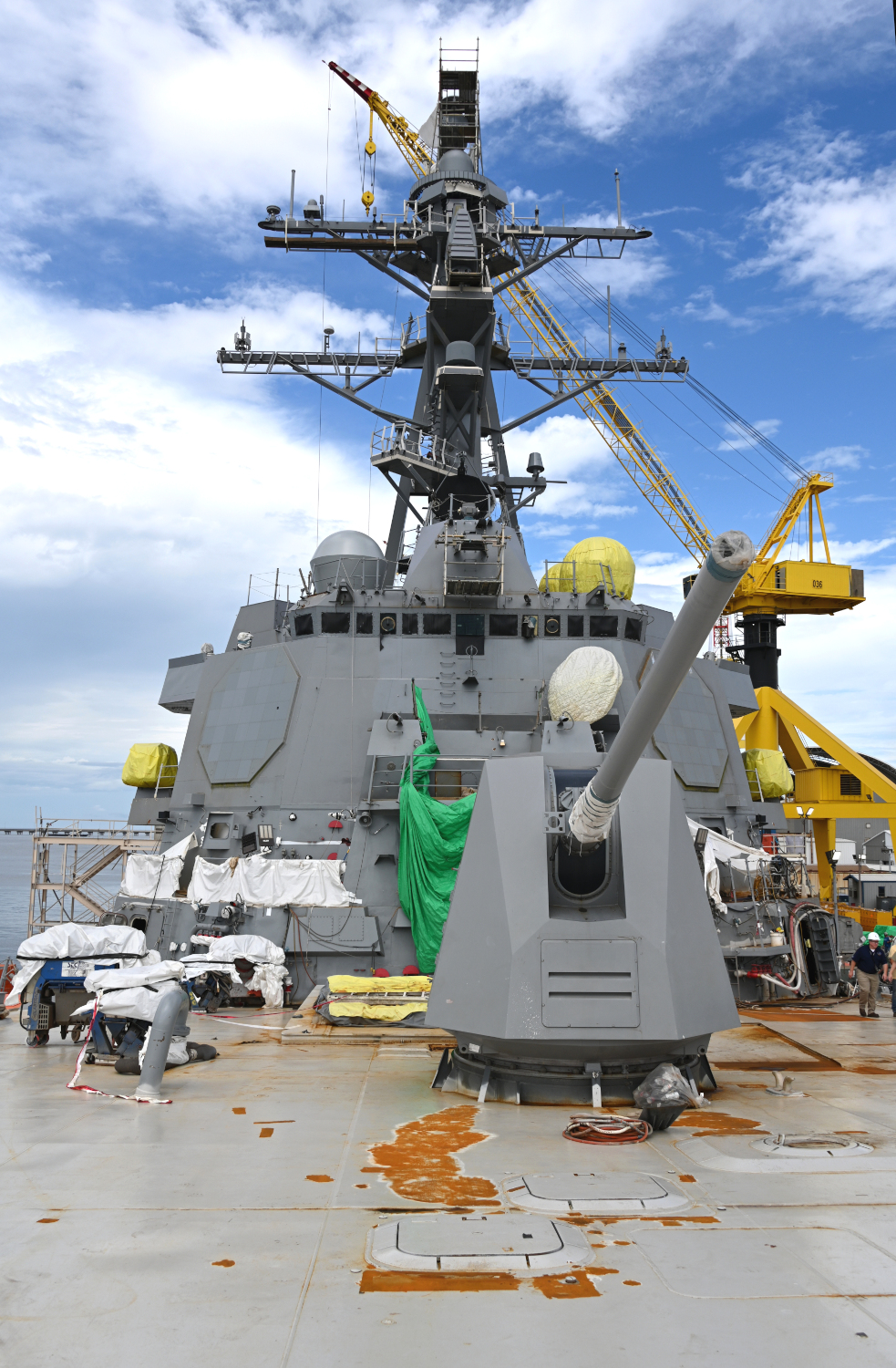
As already noted, the new AN/SPY-6(V)1 radar is a centerpiece of the Flight III Arleigh Burke design. The core component of the arrays used on all AN/SPY-6-series radars, which you can read all about here, are two-foot-by-two-foot-by-two-foot cube-shaped Radar Modular Assemblies (RMA). Each RMA is an independent active electronically-scanned antenna that can be utilized individually or linked together with others to focus their energies on a specific task.
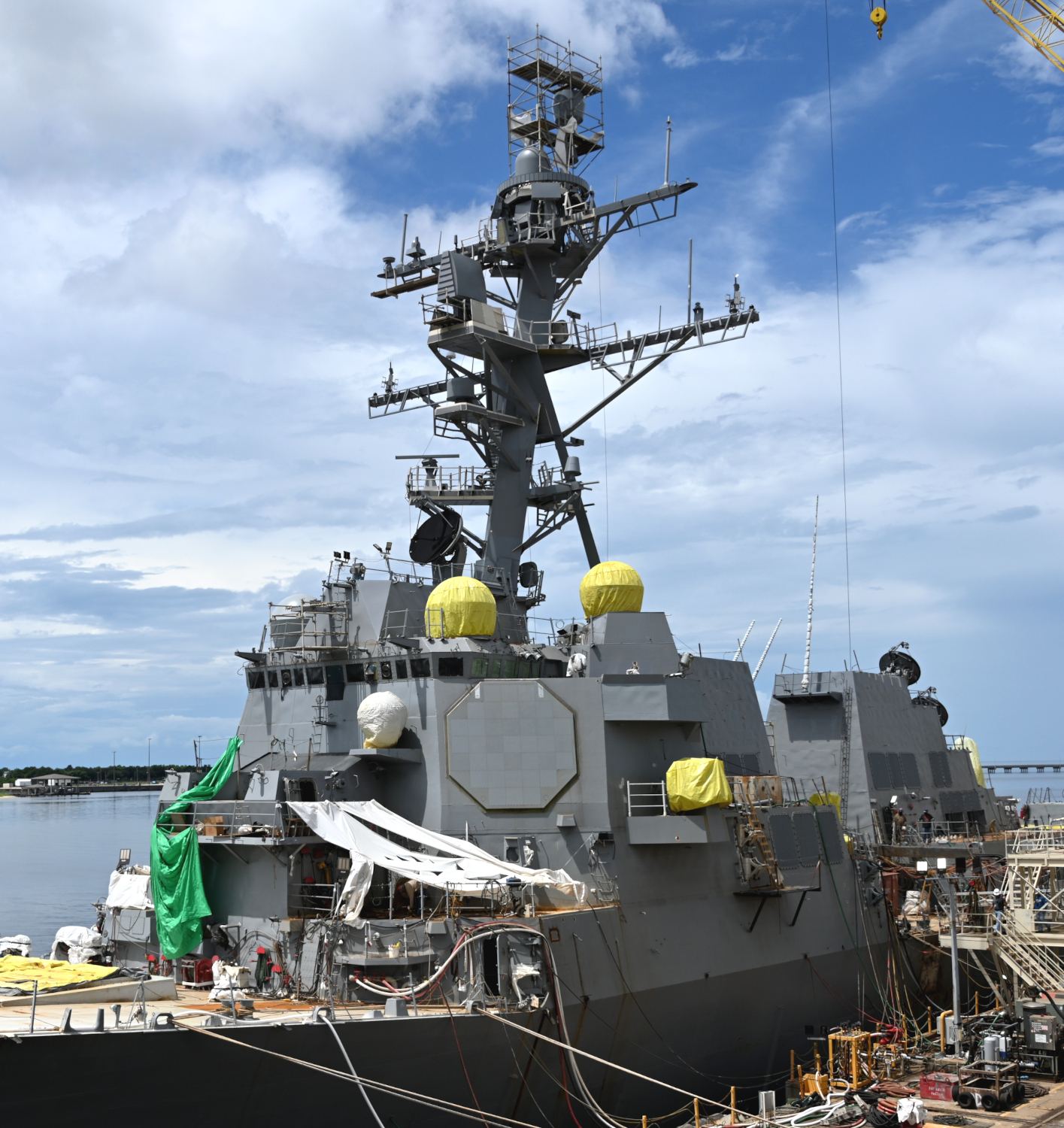

Of the AN/SPY-6 variants that currently exist or are planned, the AMDR version is by far the largest and most powerful, with four fixed-face arrays, each with 37 RMAs. The radar will give Flight III Arleigh Burkes the ability to spot, track, and engage a variety of air and missile threats with much more flexibility and with greater precision, even at extended ranges, than their predecessors.

The new radars on the Flight III Arleigh Burkes will further expand their overall offensive and defensive capabilities. The destroyers will also feature advanced versions of the Aegis Combat System and have an expanding and improving arsenal of missiles, particularly new variants of the already high-capable multi-purpose Standard Missile 6 (SM-6).

The future Jack H. Lucas may be set to be the first Navy ship to get an AN/SPY-6 radar variant, but it certainly won’t be the last. A version of the AMDR with smaller arrays is expected to be back fitted onto at least some Flight II Arleigh Burkes. Other smaller AN/SPY-6 variants, with either fixed-face or rotating arrays of RMAs, will be fitted to a host of new and existing Navy warships, including the service’s future Constellation class frigates and all new-production Ford class aircraft carriers, as can be seen in the video from the manufacturer, Raytheon, below.

There has been talk about the possibility of refitting the Navy’s Zumwalt class stealth destroyers with a version of the AN/SPY-6, as well. There is the possibility that a super-sized version of the AMDR variant, with four fixed-face arrays each with 57 RMAs, could find its way onto future guided missile destroyers, too. The Navy is very early on in the process of finalizing requirements for that still largely notional next-generation warship, which is currently referred to simply as DDG(X).
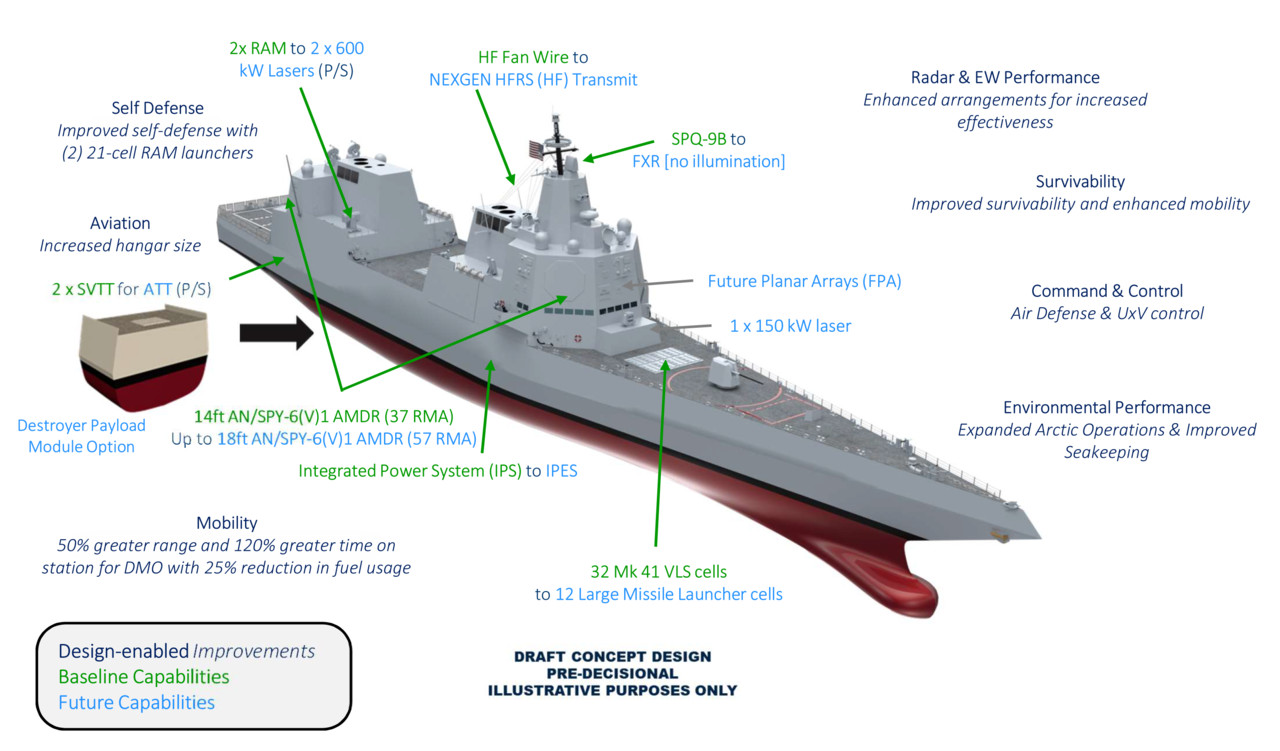
As it stands now, the Navy is expected to formally commission USS Jack H. Lucas and its powerful new AN/SPY-6(V)1 radar into service sometime next year.
Contact the author: joe@thedrive.com
